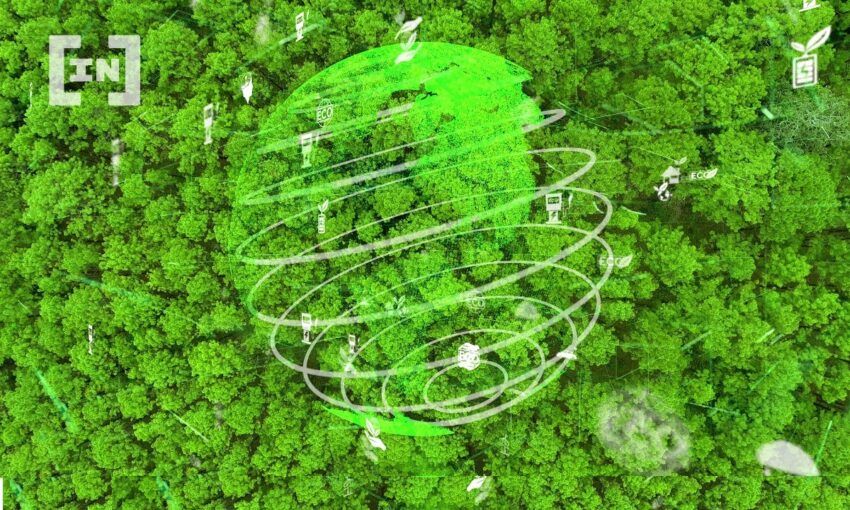Blockchain Tech ensures that corporate claims are legal

Carbon Credits: With many companies jumping on the carbon credit bandwagon to offset their pollution, how do we know if these projects are legal? By verifying their promises using blockchain, says Sarah Baxendell, Director of Ecosystem, Regen Network.
Over the past few years, there has been an explosion of climate impact commitments from large companies. Companies are looking to take responsibility for the greenhouse gas emissions from their business operations. An example is the Microsoft Moonshot target. This focuses on the company becoming carbon negative by 2030 and removing its historical carbon emissions by 2050. The goal is achieved by Microsoft directly supporting projects for the reduction and removal of carbon emissions via carbon credits.
Carbon credits are designed to remove excess carbon dioxide to balance global temperatures. But carbon credits also raise money for ecological restoration projects.
Carbon Credits: How it works
Projects that regenerate land and remove carbon dioxide from the atmosphere can sell carbon credits. Individuals and businesses can purchase these credits and then withdraw them. This means that they counteract the negative ecological effect of their business activities.
The existing system of carbon credits has been criticized in the past. There have been questions about their role in accounting. “Greenwashing” is when companies use carbon credits to avoid reducing emissions. In addition, “middleman” carbon credit registries have often been accused of having poor standards. And there are questions about the quality of some ecological projects that sell the carbon credits.
If carbon credits are to play an important role in helping the world decarbonise, businesses and individuals must use them responsibly.
Carbon credits: Purchase and retirement
Traditionally, carbon credits are purchased from brokers on a deal-to-deal basis. This leads to limited price transparency. Extra time and effort is needed to buy them. Market players can make huge profits, and money from the sale of carbon credits sometimes does not end up in the hands of the communities restoring land.
Carbon credits: Pensions are not transparent
Once purchased, carbon credits used to offset carbon footprints receive proof of retirement. This is on a piece of paper or on a PDF certificate. The information is rarely made publicly available. Carbon offset claims cannot be easily audited.
Carbon credits: High project development fees
Extremely high project registration fees and other costs mean that only large players can afford to offer carbon credits. This can exclude local communities, indigenous peoples, small estates and small organizations from participating in carbon markets.
Older carbon registers have questionable standards
Centralized, institutional, legacy registries do not meet standards expected in other industries.
Carbon credits: How can blockchain help?
Blockchain-based carbon and ecological asset registers can solve many of the challenges in the old carbon market.
-Blockchain technology provides direct access to the carbon credit market. This opens up more transparent prices for project developers, land managers and credit buyers. How? By removing third-party brokers. Examples include blockchain-based carbon marketplaces such as Regen Network, Earthbanc and Moss.Earth.
-Blockchain makes it possible to market a wider range of carbon credits to corporate buyers. This includes new, innovative soil carbon credits, such as CarbonPlus Grasslands.
-The immutable data track of blockchains such as the Regen Ledger allows both claims of ecological impact. And corporate carbon offset claims can be publicly audited by individuals, companies and governments. This ensures accurate, transparent global carbon accounting that meets the Paris Agreement.
-Web3 offers an open, public coordination tool. With it, local communities can design and manage their own carbon crediting standards. This is proven by community-driven web3 credit origination systems, such as the Regen Registry.
-Blockchain carbon markets can be highly liquid. This makes it easy to buy by volume for large companies’ climate commitments and the development of new, innovative, return-bearing financial instruments.

Looking forward to a regenerative future
The challenges of carbon offsetting are daunting. Innovation and market disruption are needed to scale the climate impact industry and meet the urgency of the crisis.
Bringing carbon markets into the blockchain has the potential to empower local communities. A Web3-native blockchain-based carbon market will give anyone with access to a computer the ability to participate in a global carbon marketplace.
More efficient, liquid and transparent carbon markets are emerging on the blockchain. And more funding will go directly into the hands of the communities that manage our forests, rivers, seas and fields. As the concentration of carbon dioxide in our atmosphere continues to rise, there is no time to waste.
About the author

Sarah Baxendell is Director of Ecosystem, Regen Network. Sarah is a social impact designer and carbon markets expert who addresses climate change through place, product and programs. As director of ecosystem, she most recently led business development, brand, partnership and product strategy for Regen Network. The Regen Network is an application-specific blockchain community for global carbon accounting and offsetting. She is the co-founder, designer and founding CEO of Hilltop Urban Farm, the largest urban farm and the first adult urban farm incubator in the United States. She led the design of the public master plan for 650+ acres of urban parks and open land in the City of Pittsburgh.
Have something to say about this article or something else? Write to us or join the discussion in our Telegram channel. You can also catch us on Tik Tok, Facebook or Twitter.
Disclaimer
All information on our website is published in good faith and for general information purposes only. Any action the reader takes on the information contained on our website is strictly at their own risk.

























